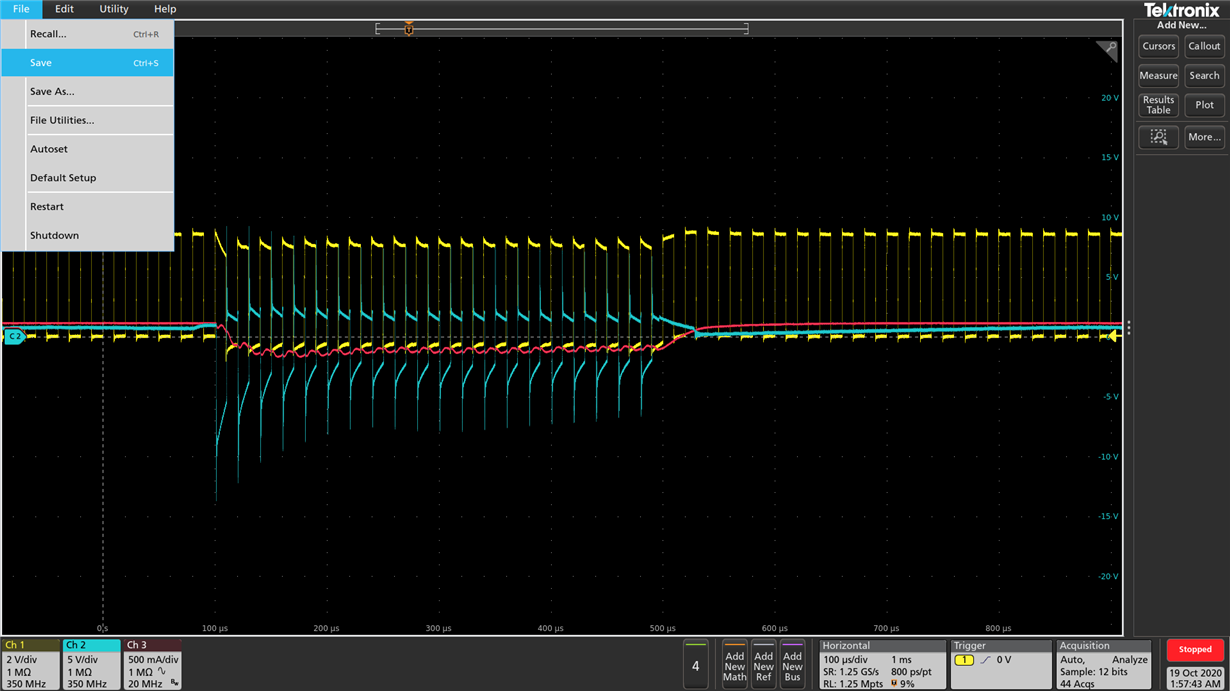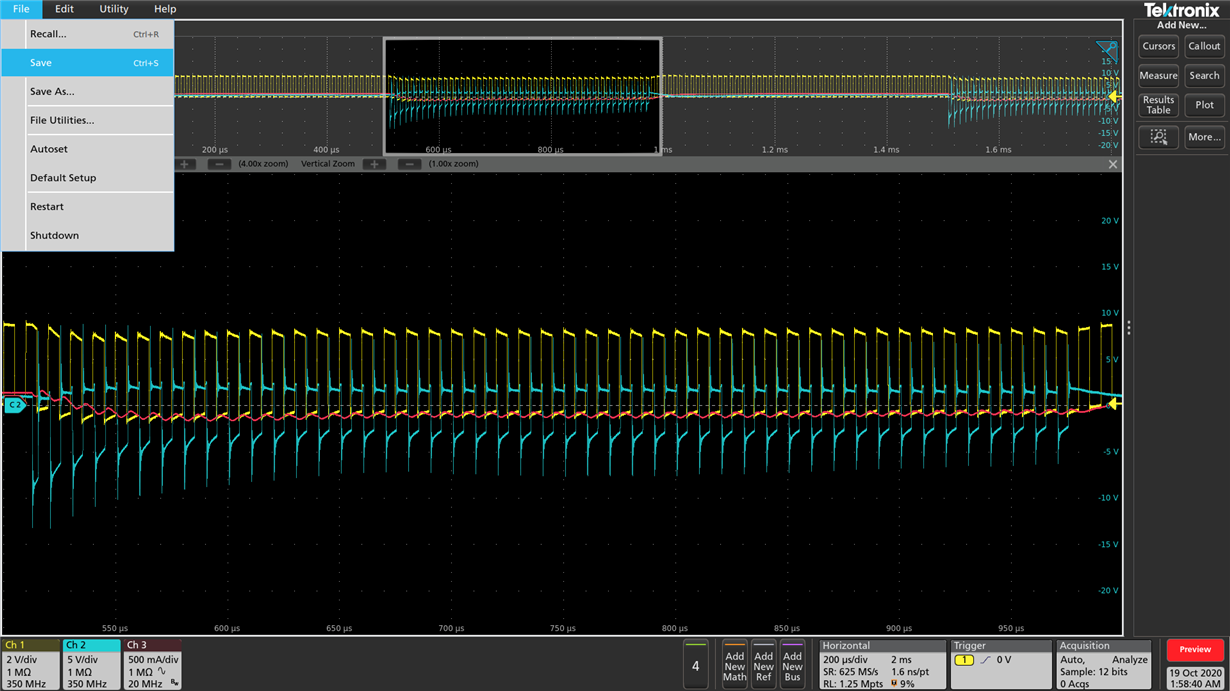Dear Support,
i have an interesting project.
I have 2 18V25 Hbridge from Polulu it has 4 NVMFS5C423NL N mosfets in use for the Hbridge topology.
the first HBridge with the 18V25 has a power supply 2231A-30-3 at 6A at 24V connected and is switching at 50/50 1KHz,10KHz, 100KHz with a le croy awg.
That by hookin up an Inductor (measured with LCR in Series, 18mH internal resistance of 2Ohm) that there is a lot of inductive kick back at 1KHz,10KHz, and 100KHz.
The maximum current that should run through each coil is 8.36A without free wheel diodes as extra protection.
First Question:
which free wheel diodes would you recommend as extra protection?
Second question:
which protection matters should be taken in place on the circuit board. i have the 24V for the Emagnet connected to a dcdc converter
That bucks the 24V to 5V on which the DRV8701 and the IMXRT1062 are connected to the same ground.
I would like to protect these against negative spikes as you can see. Yellow is the PWM signal 50/50, Red is the Current through one of the Coils, and the Blue is the Kickback, I dont think the MCU is going to like these spikes.
Together with that I have a few max31855 temperature sensors which I read over SPI on it which have a nup2105 protection to GND.
I would love to have some advice on this.
best regards
Bastiaan
10KHz





